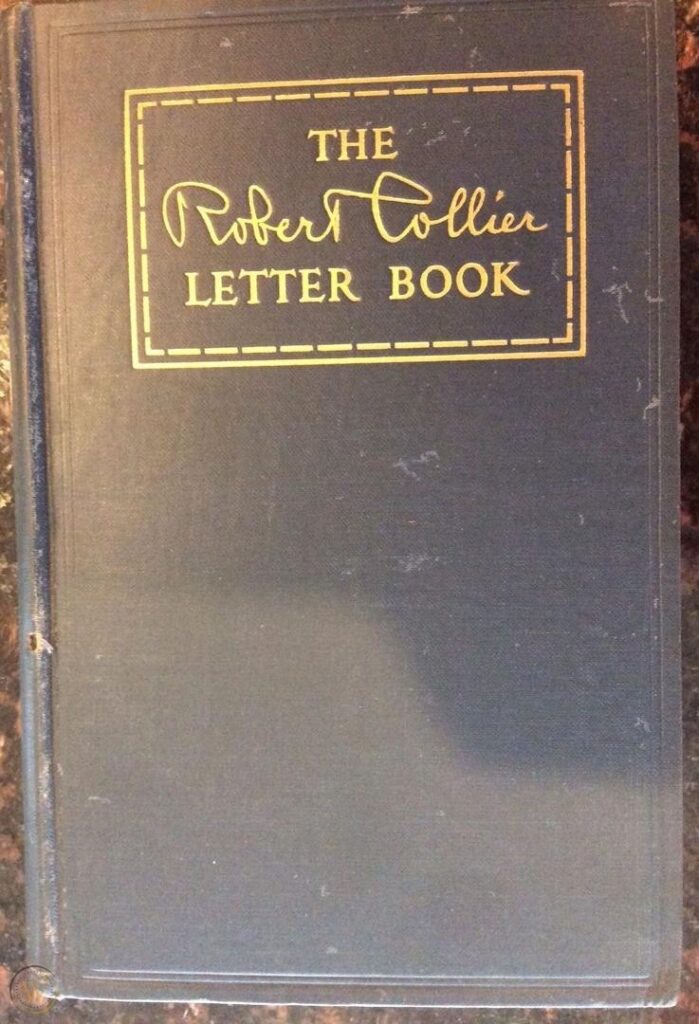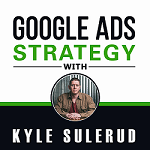Let’s take a look at Robert Collier’s six-part ad framework that you can use to create your YouTube ads.
In this blog, I’m taking you all the way back to 1931. Robert wrote a book called The Robert Collier Letter Book, which has stood the test of time and is still relevant today.
In fact, much of what you’ve learned about marketing is most likely derived from this book.

In the book, Robert shares what he calls “the six essentials of every good sales letter”. (In case you’re not aware, they didn’t have YouTube, the internet, or video ads in 1931. Things were sold with the good, old-fashioned written word.) But again, this framework is still relevant today, especially with YouTube Ads!
Component #1 – The Opening
“This gets the reader’s attention by fitting in with his train of thought and establishes a point of contact with his interests, thus exciting his curiosity and prompting him to read further.”
You may have heard this quote from Robert Collier:
“Always enter the conversation taking place in the customer’s mind.”
I can’t actually find proof that Robert ever said this. It’s not in The Letter Book (at least not in the version I have). I’m not saying he didn’t say it, but it might just be one of those internet quotes that people pass around. If you can show me exactly where this quote came from, please let me know!
Either way, it is a good quote and it’s at least in the spirit of what Robert wrote because he DID write (when talking about approaching someone who is in a conversation):
“If he were talking to someone, you’d listen for a while, wouldn’t you, and get the trend of the conversation? Then when you chimed in, it would be with a remark on some related subject, and from that, you would bring the talk around logically to the point you wanted to discuss.”
What he’s saying here is to start with a hook that speaks to your target customer. If your prospects are in pain, speak to their pain. If your prospects have desires, speak to those desires.
Don’t start out by saying, “I have this great thing for you!”
Start by saying, “You care about this, so let’s start by talking about this.”
Start with where your prospects are and then bring them around to where you want them to be.
Component #2 – The Description or Explanation
“This pictures your proposition to the reader by first outlining its important features, then filling in the necessary details.”
With this step, you are presenting your offer. What are you selling? Or, what is the next step that you want the viewer to take?
Like Robert says in his book, these steps don’t need to be in order. So, you could present your offer right after the hook, but you don’t need to. If you think it would work better to warm the viewer up a little before presenting your offer, then you could wait until the middle or the end of your ad to present your offer.
Component #3 – The Motive or Reason Why
“This creates a longing in the reader’s mind for what you are selling, or impels him to do as you want him to do, by describing, not your proposition, but what it will do for him – the comfort, the pleasure the profit he will derive from it.”
Now we are getting into the meat of the ad.
Why would someone click on your ad to take the next step? What are the benefits?
This is where you would explain the benefits, demonstrate the benefits, or maybe just hint at the benefits.
But the viewer needs to know how your thing will help them gain pleasure or help them avoid pain.
You can then use the fourth component to back up your claims.
Component #4 – The Proof or Guarantee
This offers to the reader proof of the truth of your statements, or establishes confidence by a money-back-if-not-satisfied guarantee.
Now you can provide testimonials or examples of how your thing has helped other people. If it is relevant, you can offer a money-back guarantee or some other type of guarantee.
The goal here is to get prospects to trust you.
If they want the results that you are offering and they are hesitant to take the next step, then either they don’t trust you or they don’t trust themselves.
Think about it, if I said, “Give me $1,000 and I’ll show you something you can do that will take 10 minutes of work and you’ll get $10,000 back immediately.” If you have complete trust in me and you have trust in yourself to follow through on the 10 minutes of work, then you would absolutely give me the $1,000.
I really like what Robert says in The Letter Book. It’s probably more true today than it was 90 years ago when he wrote it:
“We are a credulous people, but we have become so accustomed to hearing everyone claim that his product is the best in the world, or the cheapest, that we take all such statements with a grain of salt. Let some third person, however, apparently from excess of enthusiasm over the wonderful value or service he has received, and we prick up our ears.”
Now, of course, not every successful YouTube ad uses testimonials. This is just one component of one framework that you can follow when creating your ads. But, if you’ve never tested testimonials in your ads, then I encourage you to try.
To quote Robert again:
“There will never be a time when a testimonial, which has the ring of truth about it, will not be a potent factor in dispelling doubt in the mind of a hesitant customer.”
Well said, Mr. Collier, well said!
Component #5 – The Snapper or Penalty
“This gets immediate action by holding over your reader’s head the loss in money or prestige or opportunity that will be his if he does not act at once.”
Urgency.
Scarcity.
You’ve heard this many times before and these things obviously work to get people to take action. If your offer is expiring soon or has limited availability, then you should make this clear in your ads.
One cool thing about YouTube Ads is there is a built-in penalty for inaction.
The ad goes away.
It’s something the viewer might never see again…like a new tweet from Donald Trump, or a coherent statement from Joe Biden.
You could even tell people this in your ad. “You might never see this ad again, so if you don’t take action right now, you could miss out on these benefits forever.”
Component #6 – The Close
“This tells the reader just what to do and how to do it, and makes it easy for him to act at once.”
You know what this is – the call to action. Every ad needs one.
To summarize Robert Collier’s six essentials:
- The Opening
- The Description or Explanation
- The Motive or Reason Why
- The Proof or Guarantee
- The Snapper or Penalty
- The Close
Because I think he says this stuff much better than I ever could, here is one more quote from Robert:
“Rules are merely the start. They are the mechanics of a letter. Real letter-writing only starts there. It’s getting the feel of your message that counts.”
What I think is most important about this is that rules are the start.
If you want to transcend the rules, you can’t start by ignoring them. Learning and practicing the rules is what gives you the experience and the permission to break them.
I’ll end with one more quote from jazz saxophonist and one of the greatest musicians of all time, Charlie Parker:
“First, you learn the instrument, then you learn the music, then you forget all that sh*t and just play.”
You want to get to the point where you can just play?
Start by learning the rules.
